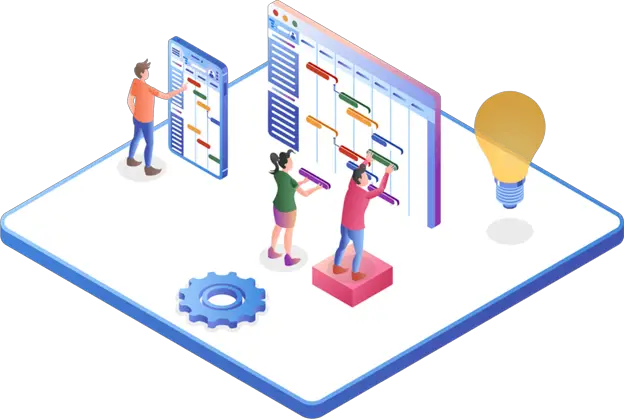Our interactions and methods of accessing applications are always changing in the fast-paced digital world of today. The explosive growth of subscription-based apps in recent years has been one of the most notable trends. These applications introduce a novel approach to software access, disrupting the long-standing model of one-time purchases or cost-free downloads supported by advertisements. Within this article, we will embark on an in-depth exploration of the universe of subscription-based apps, investigating their essence, the reasons behind their burgeoning popularity, and the advantages they offer to developers and users alike.
What are Subscription-Based Apps?
A subscription-based app refers to a mobile or desktop application that mandates users to make periodic payments, like on a monthly or yearly basis, to unlock its complete array of features and content. In contrast to one-time purchases, where you pay an initial fee for perpetual access, subscription apps provide access as long as you uphold an ongoing subscription.
These apps come in various forms, including streaming services like Netflix and Spotify, productivity tools like Microsoft 365, and mobile games like Apple Arcade. They have disrupted traditional software distribution methods, offering a more sustainable revenue stream for developers and a more flexible approach to software access for users.
Why are Subscription-Based Apps Gaining Popularity?
Subscription-based apps have witnessed a surge in popularity for several compelling reasons:
1. Ongoing Revenue Stream for Developers
For app developers, the subscription model provides a steady and predictable income stream. This predictable revenue enables developers to invest in continuous improvements, updates, and customer support. It’s a win-win scenario where developers can create better apps, and users benefit from ongoing enhancements.
2. Enhanced User Experience
Subscription-based apps often deliver a more refined and enjoyable user experience. Knowing they have a stable income source, developers can focus on refining the app, adding new features, and addressing user feedback promptly. This results in a continually improving and user-centric product.
3. Access to Premium Features
Users can access premium features, content, and services without a significant upfront cost. Instead of shelling out a large sum to buy an app, they can pay a smaller, recurring fee, making high-quality apps more accessible.
4. Free Trials and Flexible Cancellation
Numerous subscription-based apps provide complimentary trial periods, permitting users to test the app before making a commitment. Additionally, users retain the freedom to terminate their subscription at any point, without being bound to a lengthy obligation.
5. Reduced Piracy
Subscription models discourage piracy since users have legitimate access to the app’s full functionality at an affordable price. This benefits developers by reducing revenue losses due to piracy.
6. Regular Updates and Support
Developers are motivated to provide consistent updates and customer support since they rely on subscription renewals. This ensures that users have a reliable and up-to-date app.
Examples of Subscription-Based Apps
Let’s explore some popular categories of subscription-based apps:
1. Streaming Services
- Netflix: Grants access to an extensive collection of movies and TV shows in exchange for a monthly charge.
- Spotify: Allows users to explore an extensive music library through both complimentary and premium subscription choices.
- Disney+: Presents a broad spectrum of content, including Disney, Pixar, Marvel, Star Wars, and National Geographic, for subscribers to enjoy.
2. Productivity Tools
- Word, Excel, and PowerPoint programs are included in Microsoft 365, which is available for a monthly or yearly fee and also includes cloud services.
- A variety of subscription options are available for Adobe Creative Cloud, which provides access to the full suite of creative software from Adobe, including programs like Photoshop and Illustrator.
3. Mobile Games
- Apple Arcade: Presents an assortment of high-quality mobile games for a monthly subscription.
- Google Play Pass: Allows entry to a selection of Android games and applications devoid of advertisements or in-app purchases through a monthly payment.
4. Fitness Apps
- Peloton: Offers live and on-demand fitness classes for a monthly subscription, with or without Peloton equipment.
- MyFitnessPal Premium: Provides advanced features for tracking nutrition and fitness progress for a monthly fee.
The User Perspective: Is it Worth Subscribing?
While subscription-based apps offer numerous advantages, users should consider a few factors before subscribing:
1. Value for Money
Assess whether the app’s features and content justify the subscription cost. Consider how often you’ll use the app and whether it enhances your life or work significantly.
2. Trial Period
Take advantage of free trial periods to explore the app and determine if it aligns with your needs and expectations.
3. Budgeting
Consider the affordability of the subscription within your budget. Keep track of multiple subscriptions to avoid overextending your finances.
4. Cancellation Policy
Familiarize yourself with the app’s cancellation guidelines and the process for discontinuing your subscription when necessary. Verify that you won’t incur charges upon cancellation.
5. Alternatives
Explore alternative apps that offer similar features without a subscription. You might find non-subscription apps that meet your requirements.
The Future of Subscription-Based Apps
Subscription-based apps have undoubtedly reshaped the digital landscape. As more developers embrace this model, we can anticipate increased innovation and competition within the app market. Developers will persist in their efforts to provide value and enrich user experiences to retain their subscriber base.
On the flip side, users will continue to benefit from the flexibility, access to premium features, and regular updates that subscription-based apps bring. Nevertheless, it remains crucial to approach app subscriptions with careful consideration, evaluating whether they align with your specific needs and financial resources.
In this dynamic app ecosystem, one fact stands out: subscription-based apps are here for the long haul, offering developers a sustainable pathway and users a flexible, feature-rich digital experience. As the realm of apps continues to evolve, so too will the methods through which we access and relish the software that drives our digital lives. To know more interesting info about software development, follow this link!



























